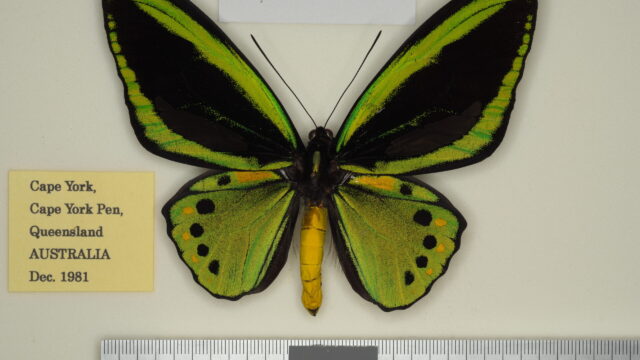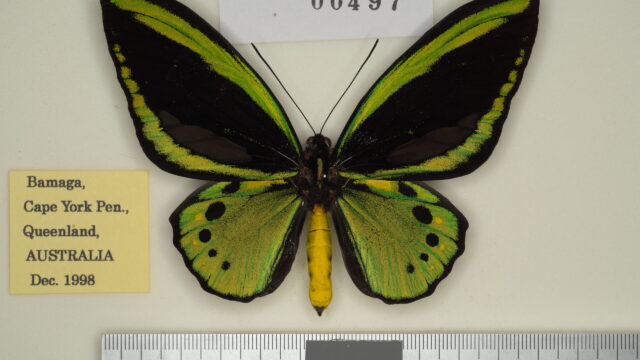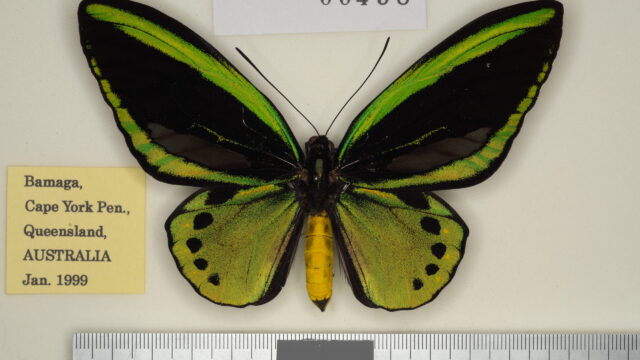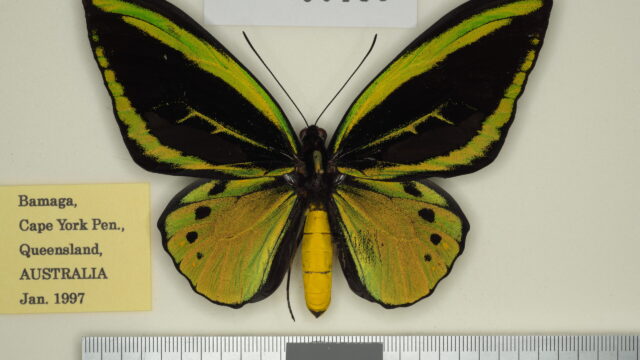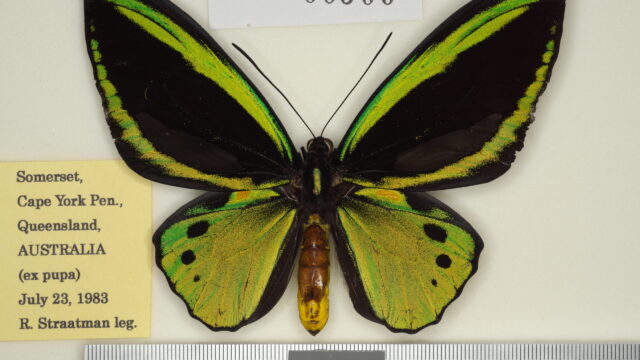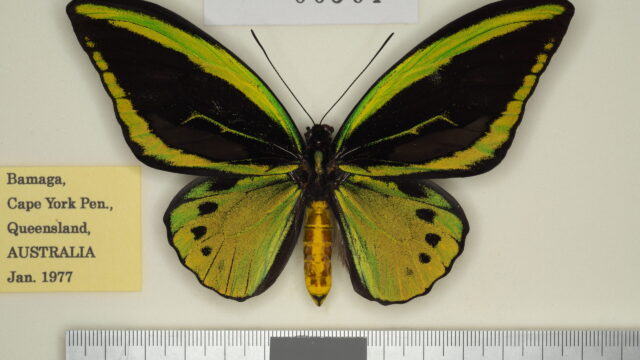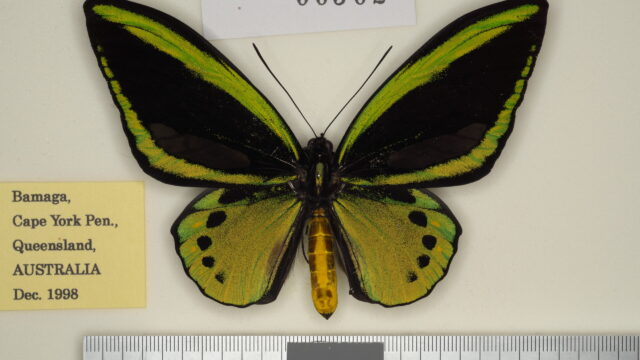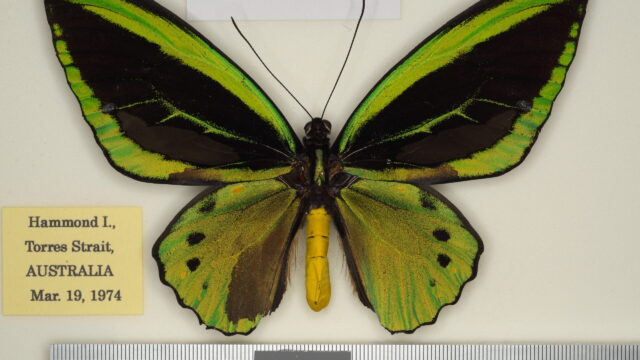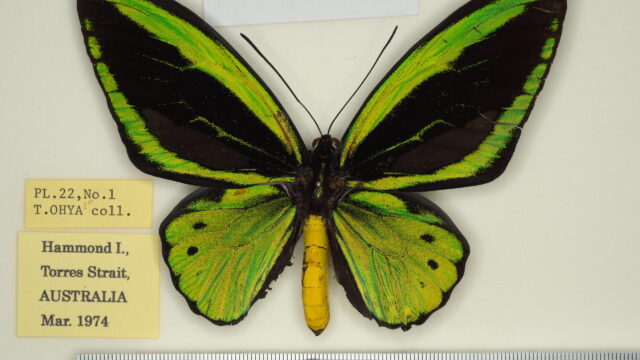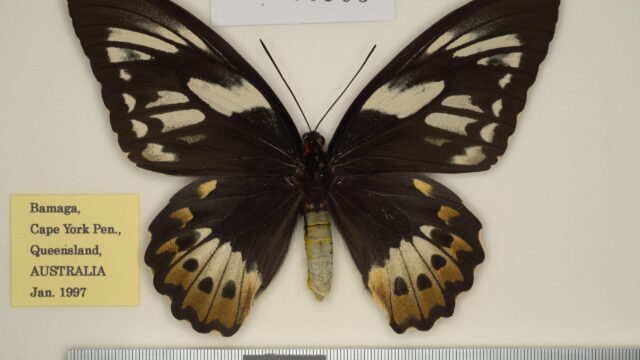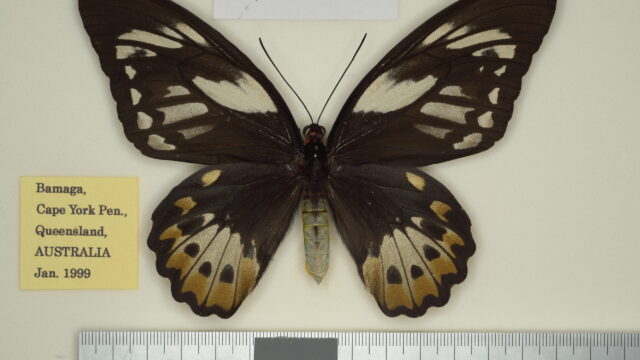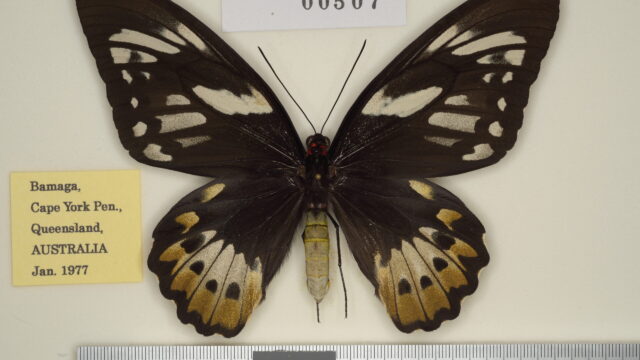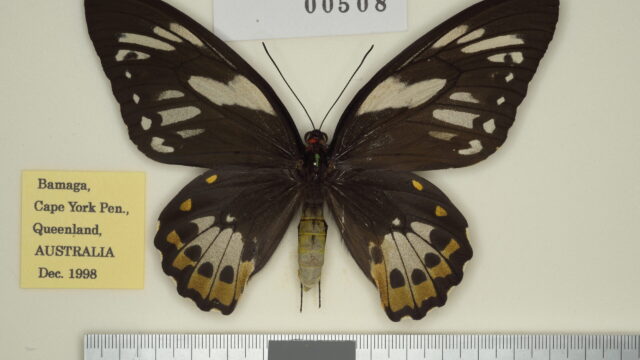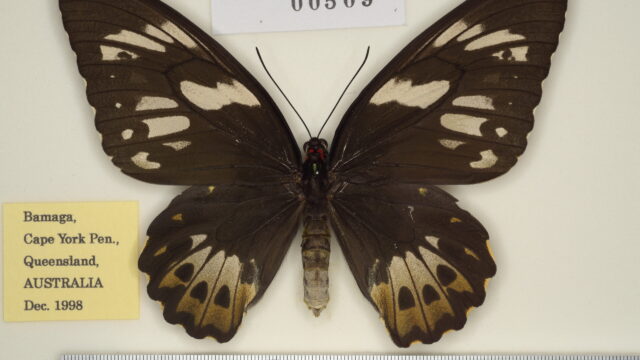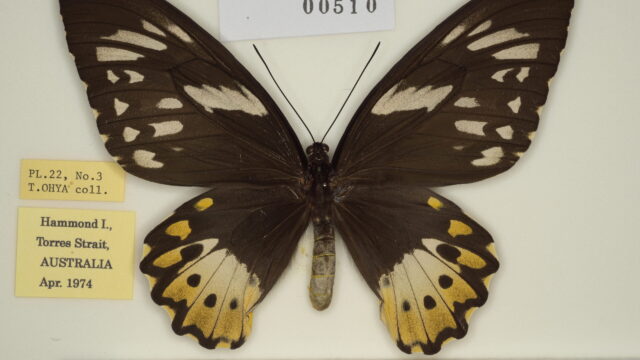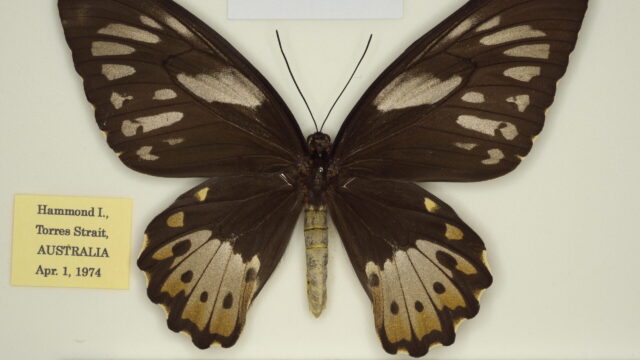- Ssp. pronomus (Gray, 1853)19): [♂, ♀]
(Distribution) [Map 21]
AUSTRALIA [Torres Strait] Hammond Is., Thursday Is., Prince of Wales Is. [Cape York Peninsula] Lockerbie Scrub, Bamaga, Somerset, Jardine River basin.
(Episodes of discovery and original description)
Described by Gray (1853) as a new species of Papilio based on 2♂♂1♀ collected by Macgillivray at Cape York, Australia, during his scientific survey on the H.M.SS. “Rattlesnake”. Subspecies name pronomus is either a “forward locality (meaning Cape York)” or a pronominare “pronoun (of poseidon)” as speculated by Haugum and Low (1979), the meaning of the nomenclature is unclear.
(Characteristics)
This is the northernmost of the four subspecies in Australia. While the other three subspecies belong to the Priamus-Subspecies-Group, which is considered primitive, this subspecies seems to belong to the Poseidon-Subspecies-Group based on its wing-shape, pattern, and genitalia. In other words, while the other three subspecies migrated to Australia at early stage and acquired endemic traits, this subspecies seems to have expanded its distribution from New Guinea to Torres Strait and further to Cape York Peninsula of Australia later. This is supported by the fact that individuals distributed in islands of Torres Straits, including Darnley (=Erub) Is. (type locality of ssp. poseidon), all have similar morphology to ssp. poseidon, while individuals from Hammond Is. and Thursday Is., which are closest to the Australian Continent, show an intermediate morphology between ssp. poseidon and ssp. pronomus.
(Spotted patterns)
♂: This subspecies is smaller than ssp. poseidon. Many Individuals have a minute green median stripe on FW. A semi-translucent golden spot is present on the subcostal space and black discal spots are small in many individuals. The black marginal border is narrow.
♀: Only the contrasted (=dark) form (dark ground color with white spots) is known. The FW spots are well developed and large. The submarginal area of the HW pale band, which does not reach the cell, is yellowish brown on the surface and dark yellow on underside.
(Variation)
No specific aberration is unknown.
(Larval footplant)
Aristolochia tagala.30)
